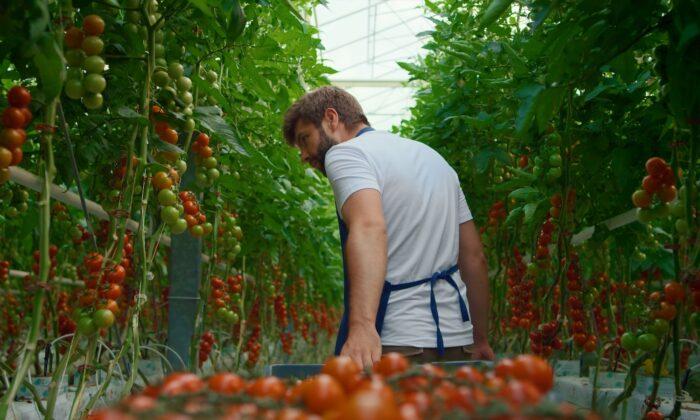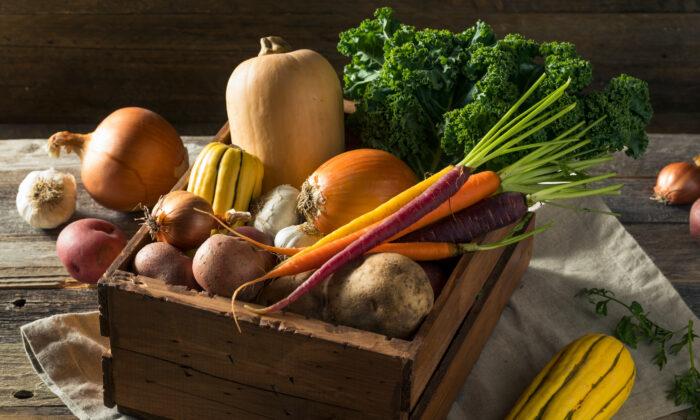Buying organic foods isn’t just for the health-obsessed few. Eight out of ten households purchase organic products at least occasionally and the organics sector continues to grow.
Purchasing organic items is also easier than it used to be, since they are now available in nearly 20,000 natural food stores and nearly three out of four conventional grocery stores, according to the USDA.
However, shoppers are facing a challenge in 2022 as inflation and supply chain issues push up the price of fuel and food. Yet despite these rising expenses, we’re seeing a dramatic increase in sales of organic foods.
Growing Organic Food Sales
Fueled by a desire to boost immunity and keep their families healthy, consumers have embraced the practice of using food as medicine like never before. U.S. organic sales leaped to new highs in 2020, increasing by a record 12.4 percent—to $61.9 billion—according to Nielsen findings released by the Organic Trade Association in 2021.“Good, healthy food has never been more important, and consumers have increasingly sought out the Organic label. Organic purchases have skyrocketed as shoppers choose high-quality organic to feed and nourish their families,” said Laura Batcha, CEO and executive director of the Organic Trade Association.
Organic food and beverage sales grew 6 percent to $50.75 billion in 2021—not the record growth seen in 2020, but higher growth than before the COVID-19 pandemic, according to information presented at Natural Products Expo West 2022. Industry analysts say the pandemic changed consumer behaviors: More new customers who were focused on protecting their health bought organic foods in 2020 and continued to buy them in 2021, and the COVID-influenced sales growth in organic foods is expected to continue in coming years.
Organic 101
For products to display the USDA Organic seal, 95 to 100 percent of their ingredients must be organic. Organic foods must be produced without the use of any of the following: synthetic chemical pesticides and fertilizers; genetically modified organisms (GMOs); sewage sludge; irradiation; industrial solvents; and synthetic food additives.In general, organic foods are 10 to 20 percent more expensive than conventionally grown foods, but shoppers will often pay a higher price out of a desire to protect their health, minimize exposure to synthetic pesticides, and help protect the environment. Some shoppers also know about research that indicates that organic crops, on average, have higher concentrations of antioxidants, lower levels of the toxic heavy metal cadmium, and much lower levels of pesticides than conventionally grown crops.
Ways to Pay Less for Organic Foods
To keep the costs down when you buy organic foods, try these budget-friendly strategies. I compiled the following suggestions for my 2014 book “Going Against GMOs,” and I have since updated and expanded them.Pay attention to store sales. In supermarkets and large natural food stores, there may be up to 1,000 items on sale at any given time, and many of them are organic.
Sign up for store newsletters with deals of the week. You can also look for them in your local newspaper. Plan your shopping around organic items that are on sale that you most want and need, and then create meals around those items.
Capitalize on incredible one-day sales. If you get email or text alerts about these super deals and go to the store on the day of the sale, you can save big.
Join a customer loyalty program with your favorite store. A common feature of these programs is that they offer member-only discounts on different organic products every week or month.
Subscribe to websites that offer organic coupons. There are many from which to choose. A few include PassionForSavings.com, InspiringSavings.com, and AllNaturalSavings.com.
Follow the websites or social media pages of your favorite organic food companies. They sometimes offer special coupons or promotions in posts or advertising banners there.
Comparison-shop to find the best deals on organic items. Within the same city or area of town, organic produce prices can vary greatly. By shopping around, you’ll get a good idea of which foods are cheaper at certain stores.
Buy your most commonly consumed products by the case. Some stores offer a case discount, and you can sometimes use coupons or sale prices on top of that discount.
Select produce that is in season as much as possible. When it’s in season, it’s usually much less expensive.
Use assistance programs if you’re on a fixed income. It’s important to know that many farmers’ markets accept Supplemental Nutrition Assistance Program (SNAP)/EBT (formerly food stamps); Women, Infants, and Children (WIC) coupons; and Seniors Farmers Market Nutrition Program (SFMNP) coupons or other state-run assistance program vouchers. Find out which programs you qualify for that farmers markets in your area accept. Then use coupons from those programs to buy produce from local growers who don’t use synthetic pesticides.
Look for organic products at dollar stores, clearance stores, and local food banks. In recent years, as part of farmer and organic industry programs to make organic foods more easily available to low- and middle-income families, there has been a concerted effort to place more of these foods in discount stores and food banks. Grocery stores will also send near-expired foods to clearance stores, where you can get them at a steep discount.
Grow your own. Start a small organic vegetable garden if you can. If you have only a windowsill, try growing potted organic herbs. It’s an effective cost-cutting action to take because these produce items tend to be overpriced in stores. If you grow too much of some foods, trade with neighbors to get more variety.
This article is adapted from information in “Going Against GMOs” by Melissa Diane Smith.
Melissa Diane Smith is a holistic nutrition counselor and journalist who has been writing about health topics for more than 25 years. She is the author of several nutrition books, including “Syndrome X,” “Going Against the Grain,” “Gluten Free Throughout the Year,” and “Going Against GMOs.”
Sources
3 Cox, Caroline. Beyond Pesticides Online Pre-Conference Workshop, May 24, 2021.
4 Organic Agriculture. USDA Economic Research Service. Op cit.
5 The State of Natural & Organic keynote. Natural Products Expo West online convention, May 25, 2021.
7 Ibid.
8 The State of Natural & Organic keynote. Natural Products Expo West 2022. March 9, 2022.
12 Baranski M. Srednicka-Tober D, Volakakis N, et al. Higher antioxidant and lower cadmium concentrations and lower incidence of pesticide residues in organically grown crops: a systematic literature review and meta-analyses.
The British Journal of Nutrition, 2014 Sep 14; 112(5): 794-811.
https://www.ncbi.nlm.nih.gov/pmc/articles/PMC4141693/.
16 Personal Interview with Anne Loftfield, local, organic, regenerative farmer with High Energy Agriculture, a long-time farmers’ market vendor, in Tucson, Arizona, March 31, 2022.
17 J.E.D.I. Collaborative Education: The Call for Systemic Change in the Natural Products Industry. Natural Products Expo West 2022. March 9, 2022.






